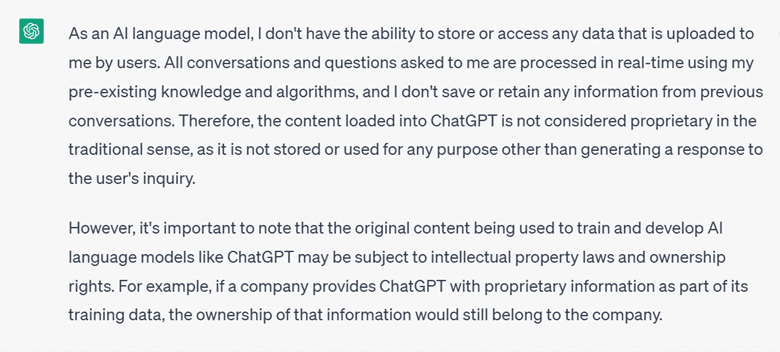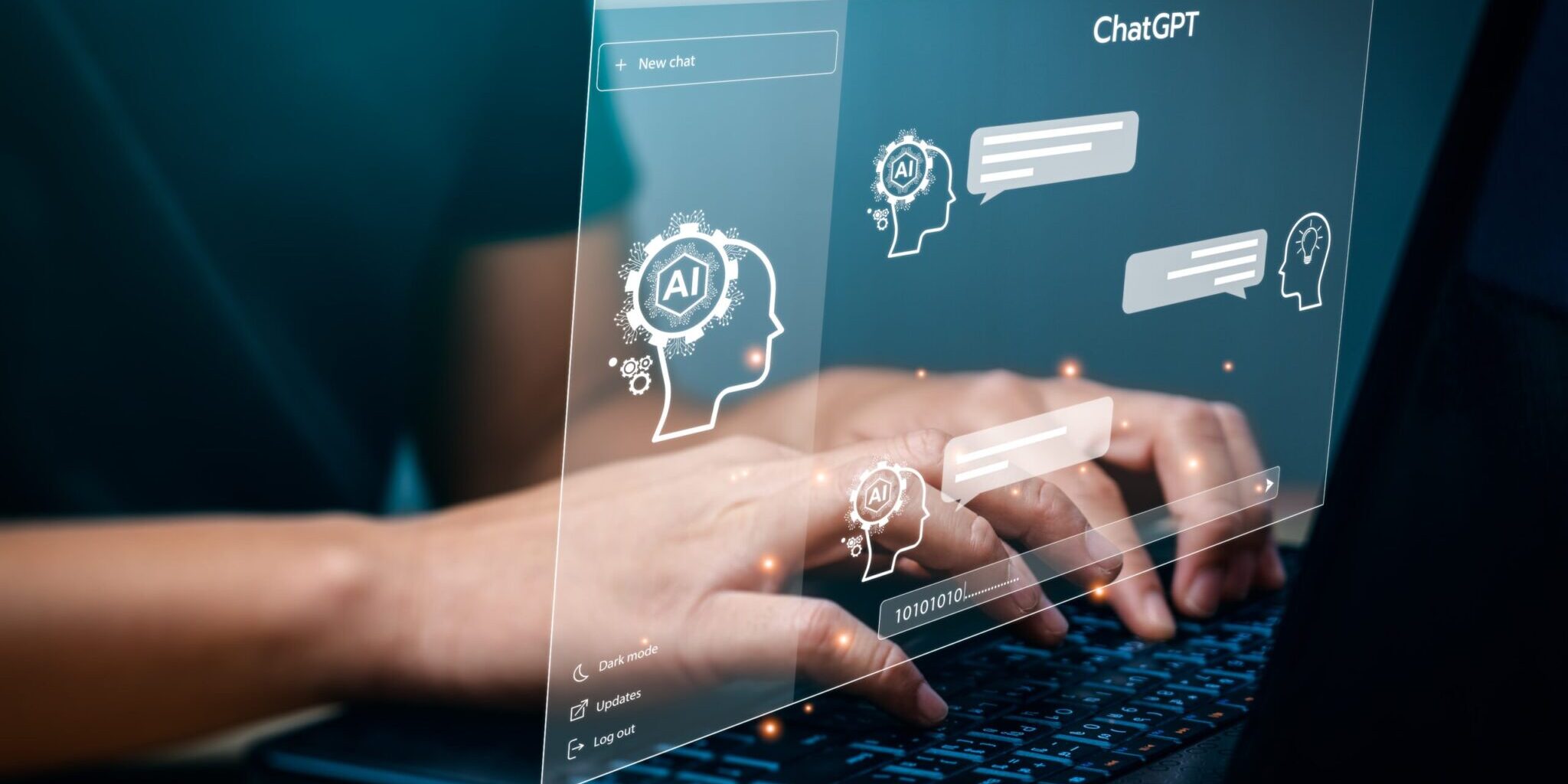
What are the advantages and challenges of using ChatGPT to translate your materials? We answer your questions about the role of Artificial Intelligence (AI) in machine translation and its potential impacts on the translation process as a whole.
Chat GPT can write code! It can write copy! But…
Can ChatGPT translate?
ChatGPT, Bard, Google Translate, Azure AI, and similar bots can translate, but a human should always be involved in the translation process. AI and Machine Translators may be able to write and translate but you need to understand potential issues when you use ChatGPT for translation.
Find out if Chat GPT is your friend or foe. If we don’t answer your question in this article, email us here so we can.
ChatGPT: Not new, just different
If you haven’t heard of ChatGPT yet, don’t worry – we interviewed ChatGPT, so it can tell you itself:
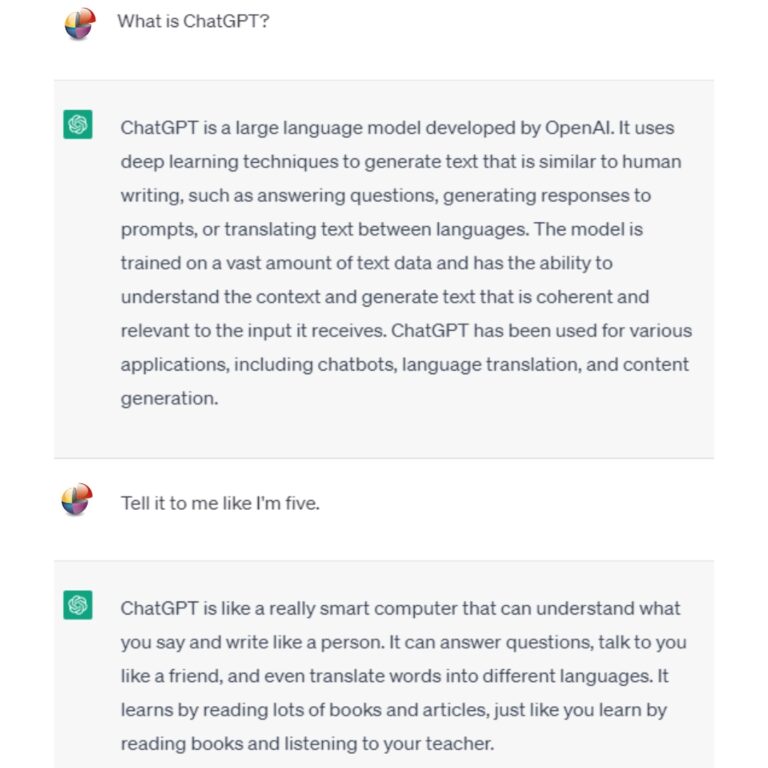
Sounds perfect, but notice it doesn’t mention translation quality. So…
Is ChatGPT good for translation?
It depends on what you’re translating and if you have a good quality analysis step in your translation process.
Machine Translation tools powered by artificial intelligence like ChatGPT or Google Translate have been around for years, and accuracy is always a concern when using them. Simply take a look at some often-hilarious translations.
New Machine Translation tools like ChatGPT, Google’s Bard, and Microsoft’s Azure AI approach the task differently. Rather than translating word-for-word, the tool tries to understand the message behind the text. Then it performs the translation.
Just like a human translator, right?
Not quite.
Essentially, ChatGPT is an improved version of the predictive text feature on your phone. It uses a probability distribution to guess the next word in a sequence.
ChatGPT bases this prediction on information it’s been fed, which can be inaccurate or biased. (We’ll dive into this more later in the article.)
This large language model (LLM) technology is how Bard and Azure can handle tasks like writing an essay, email, or limerick. The AI guesses what you want, looks for examples, and mimics them.
The hidden issues of using AI for translation
Because AI platforms like ChatGPT base their output on input scraped from other sources, we need analyze the possible issues that can occur when using it for translation:
Issue #1: Inaccurate & Emotionless Translations
Critics complain that AI can’t be relatable and can’t connect emotionally. But it also can’t read the room.
Chatbots choose their words based on probability. For example, if they encounter many instances of the word “pooch” being used for “dog,” they’ll include “pooch” in their essay on dog training.
They have no idea if that word is derogatory or offensive. Imagine instead we’re talking about people instead of dogs…
Applying this to localization, imagine the potential dangers of counting on a computer program to translate a marketing email for a foreign country. Quality control won’t be able to help you here!
Issue #2: Information Privacy Isn’t Guaranteed
When we asked Chat GPT about translation and information security, it responded:
Confusing? Let us translate:
ChatGPT says “…it is not stored or used for any purpose other than generating a response…”
This means: Information pasted into ChatGPT is still being saved somewhere. This means it can be accessed by someone and used without your permission.
If you load private information into ChatGPT for translation, that information isn’t used for future ChatGPT answers. But it is still stored, even if the current model of ChatGPT isn’t accessing it.
As far as why it’s saved and who can access it – we don’t know. That means all they have to do is change their terms and conditions to access past answers and poof – your confidential content is fair game. It could be the company that owns ChatGPT, someone who hacks the company, or marketing agencies targeting you.
During the interview, Chat GPT went on to state the following risks/disclaimers over and over:
- “text loaded into ChatGPT may be visible to the user and anyone else who has access to the device or platform”
- “avoid sharing sensitive or confidential information”
- “consult any relevant laws or regulations that may apply in your jurisdiction [regarding what information is considered private or confidential]”
You don’t know who or what will have access to the information you provide to online AI tools.
Issue #3: ChatGPT Doesn’t Consider Copyright Laws In Its Answers
… except to give a disclaimer that ChatGPT’s answers might infringe on someone’s intellectual property. That’s not ChatGPT’s problem, though, according to the previous image.
ChatGPT has a lot of content, but we might not know who owns it or if it has any intellectual property restrictions.
Want to translate the word coffee into ten languages? ChatGPT might not be accurate, but it won’t be copyright infringement.
However, if you ask for it to draft a mission statement and translate it into ten languages, you might just end up playing with text that is owned by Coca-Cola. But that’s your problem, not ChatGPT’s.
Does ChatGPT localize translations?
Short answer: it tries its best, but ChatGPT’s best isn’t always right.
Instant translators (like ChatGPT or Google Translate) have always struggled with the many ways to translate an idea or phrase. This flexibility is one of the complexities of human language that machines don’t quite understand
Just because a machine translation tool has provided what it thinks is the best translation doesn’t mean it’s right.
The new generation of tech is more likely to understand that “raining cats and dogs” should translate to “raining heavily” and not “calicos and cockapoos are falling from the sky.” But it still has its limits.
Shortly after ChatGPT made its buzzy debut, Lain Murray, professor of machine learning at the University of Edinburgh, tested its ability to translate a particular Chinese phrase.
The simple sentence is Murray’s version of an unbreakable riddle – he has tested it on every commercial machine translator, each one has gotten it wrong. ChatGPT was no different, except the cheeky app tried to convince Murray that either a) he was wrong or b) the problem was with the source material.
A team of researchers at Tencent AI Lab might have a reason for why the chatbot struggled. They found that the more similar the source and target languages are, the more accurately ChatGPT can translate. It’s pretty confident translating German into English, but using a lot more guesswork to translate English to Chinese.
In Murray’s riddle, the machine mistranslated a character that means an action never takes place and used a character that implied it sometimes takes place.
This seems minor in an academic sense. But what if the material being translated is an employee safety manual, legal statute, or medical textbook?
Minor discrepancies can lead to major issues.
Can ChatGPT replace translators?
Not in the near future. We’ve established that AI software like ChatGPT and Bard have a hard time translating accurately and have no idea if they’re being offensive or not. Are there any other issues?
Well, since you asked…
Most AI has to be fed data to produce an answer. But how do you know if the data is good? Accurate? Recent? Complete?
You don’t.
Because the data feeding ChatGPT is cut off at a specific date, the AI can’t consider recent events that could make references appear tone-deaf or insensitive. Since languages change with time and culture, this will be problematic as AI ages.
When we asked ChatGPT if it was good at translating languages, the tool admitted its shortcomings. In the machine’s words, “translations may require human review and correction.”
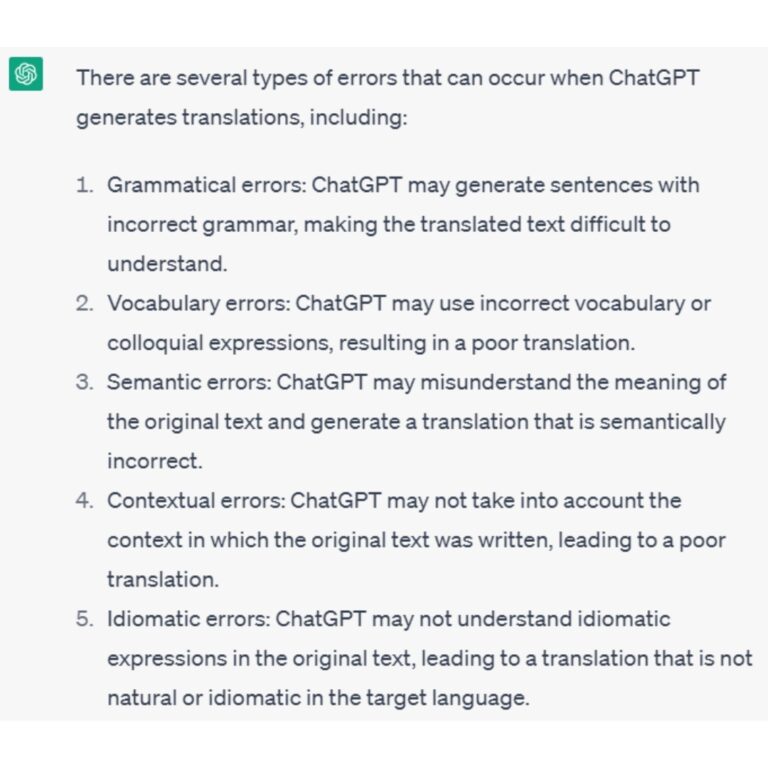
To summarize the challenges of using any AI like ChatGPT for translation:
- Accuracy: ChatGPT may not produce accurate translations, especially for complex or technical content.
- Context: ChatGPT may misunderstand the prompt, style, or tone and not consider cultural or language sensitivities because AI can’t detect cultural nuances.
- Confidentiality: ChatGPT may not protect private information
- Bias: Like all machine learning models, ChatGPT can be biased and offensive in its translations.
- Limited language support: ChatGPT can’t translate every language.
- Limited technical ability: Chat GPT is not as advances as other professional translation tools on the market
- Text only support: ChatGPT can’t provide translations based on an images, videos, or audio files.
Using ChatGPT as your only translator isn’t a good idea.
Does ChatGPT have a place in the translation workflow?
Only as long as it isn’t your only step in the translation workflow. You can use ChatGPT in your translation workflow if it’s surrounded by additional steps for:
- Grammatical and spelling proofreading
- Localization for cultural nuances
- Formatting (it’s easier to format Spanish, but have you ever tried to format Arabic?)
ChatGPT could perform these same tasks as other machine translation tools:
- Assist translators in providing even better, faster, and more efficient translations of spoken or written text.
- Reduce the time and cost of translation services, allowing translators to work more efficiently and deliver translations faster without sacrificing quality.
- Make translation services more affordable and accessible, especially for small businesses and individuals.
ChatGPT could be used as a helpful tool for translating simple, low-consequence messages like:
- internal emails;
- customer service chats;
- communications when traveling in foreign countries;
- translating foreign documents into English for information and analytical purposes only.
So whatever you use for, we’ll leave you with this quote from ChatGPT:
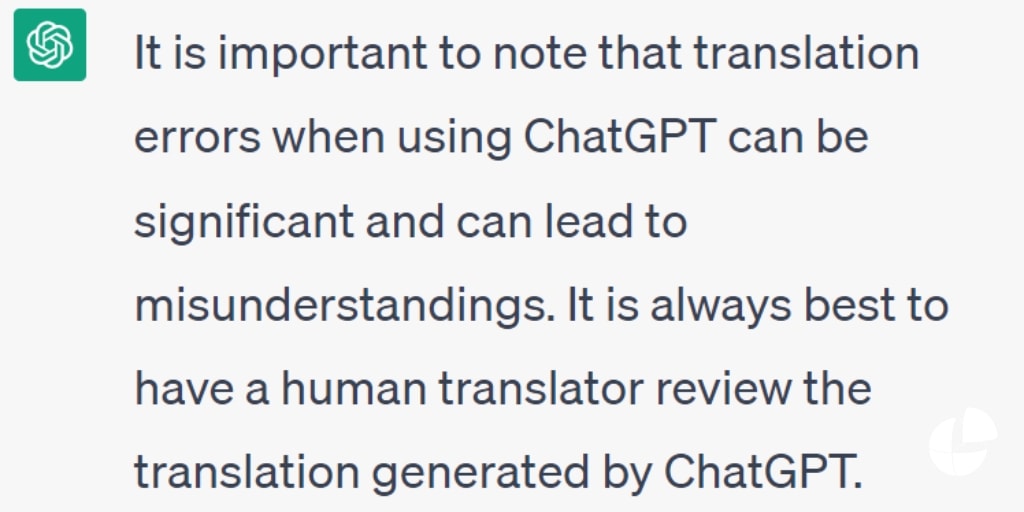
Because only one thing can grasp the ever-changing meanings and contexts of culture language: the human brain.
No matter the project size, language, or deadline, Interpro‘s expert team keeps your translations accurate. Professionals will find a foreign language partner in Interpro Translation Solutions.
Category: AI Translation, Featured, Translation
Service: AI Interpreting, AI Translation
Don't forget to share this post!
Stay Updated with Interpro
Subscribe to our newsletter for the latest updates and insights in translation and localization.


